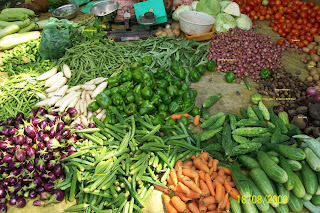
This cookbook lists 1000 variations of no-cook vadams from 000 to 999. As with all One page cookbooks, 000 is the easiest recipe and 999 the hardest. The variations of the following vadams are listed in this cookbook
Sadham vadam
Paruppu vadam
Idli vadam
Thayir avil vadam
Karamani vadam
Thenga vadam
Vadam Logic: Sun dry spiced lentil – processed cereal paste in various shapes. Deep fry and use
Shaping Vadams: Depending on the thickness of the batter, you can shape vadams in various ways. If the batter is very thick, with the consistency of a chapatti dough, you can pinch off small pieces ( killu vadam) or extrude it with a muruku press ( or a cookie press) into different shapes ( long thin strips, coiled tubes like a jalebi, short, thick strips etc). If the batter has the consistency of thick soup you can pour a spoonful of it on a plastic sheet cloth and spread into small rounds
The Base
Processed cereals ( Rice flakes, puffed rice, cooked rice, even Idlis) are mashed into a paste form the base for many vadams. Soaked and ground dals (Urad dal, cowpea, tuvar dal, chana dal ), coconut are also used as a base. These are usually mixed with chili & salt.
Flavouring
Almost anything can be used to flavouir a vadam. The traditional flavourings are listed in column 2.
Additives
Traditional additives are listed in column 3. Bone vine grows wild in countryside is a unique additive. A variety of food colours are now used to make colourful vadams. Sesame lends a nice flavour, but is prone to spoilage on long storage. Feel free to experiment with your favourite additives
Though vadams last long, they do deteriorate over time. It is advisable to use them within an year or refrigerate them for longer storage. Freezing vadams for a week after sun drying them would help improve their shelf life (as freezing kills off any insect larvae / eggs)
Thalippu Vadam / Thalippu Vadagam or Vengaya Vadagam is the secret ingredient in divinely flavoured kulambu / kootu / poriyal / sambar. Traditional thalippu (fried seasoning) ingredients are mixed with crushed shallots , garlic and are sun cooked it for a couple of days. They are then shaped into lemon sized balls and are sun dried completely. A small bit of the ball is broken, fried in oil and used to flavour curries, imparting a deep, rich flavour to them. Surprisingly, Castor oil, a powerful laxative is traditionally used to shape this vadagam ! As Vadouvan, it has started to gain global fame and is now used in traditional western dishes. Like all vadagams, they can be oven roasted instead of being sun dried.









